Government of Ceylon
George VI Pictorial Specimens
During WWII the Ceylon Board of Commissioners of Currency issued
Pictorial currency notes of King George VI, of One, Two, Five, and Ten
Rupee denominations dated 1st February 1941 with PROMISE TO PAY
BEARER ON DEMAND THE SUM OF ...
Fifty, and Hundred, and Thousand Rupee denominations dated 1st
September 1941, with THIS NOTE IS LEGAL TENDER FOR PAYMENT OF ANY
AMOUNT.
A Ten Thousand Rupees Denomination was also issued dated 15th October
1947 for inter-bank transactions only.
To avoid risky transport from UK during WWII, this series of notes were
printed by lithography process in Currency Note Press (CNP) of
Government of India in Nashik.
Water-mark: Ratnapura Raised Lion with whip on paper manufactured by
Messrs Portals Ltd.
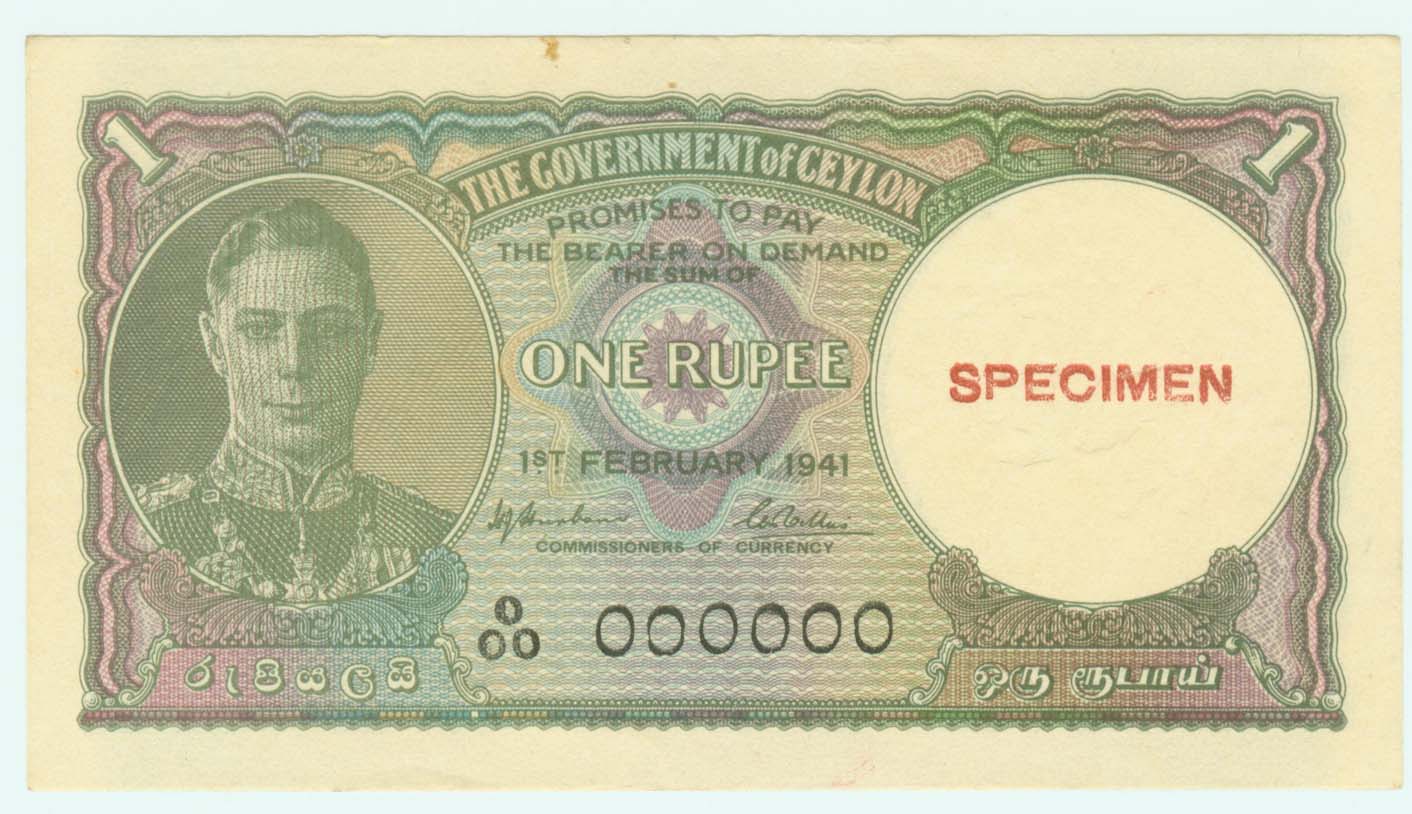
| 
| Brownish Green
114x64 mm - Rs 1
note
|
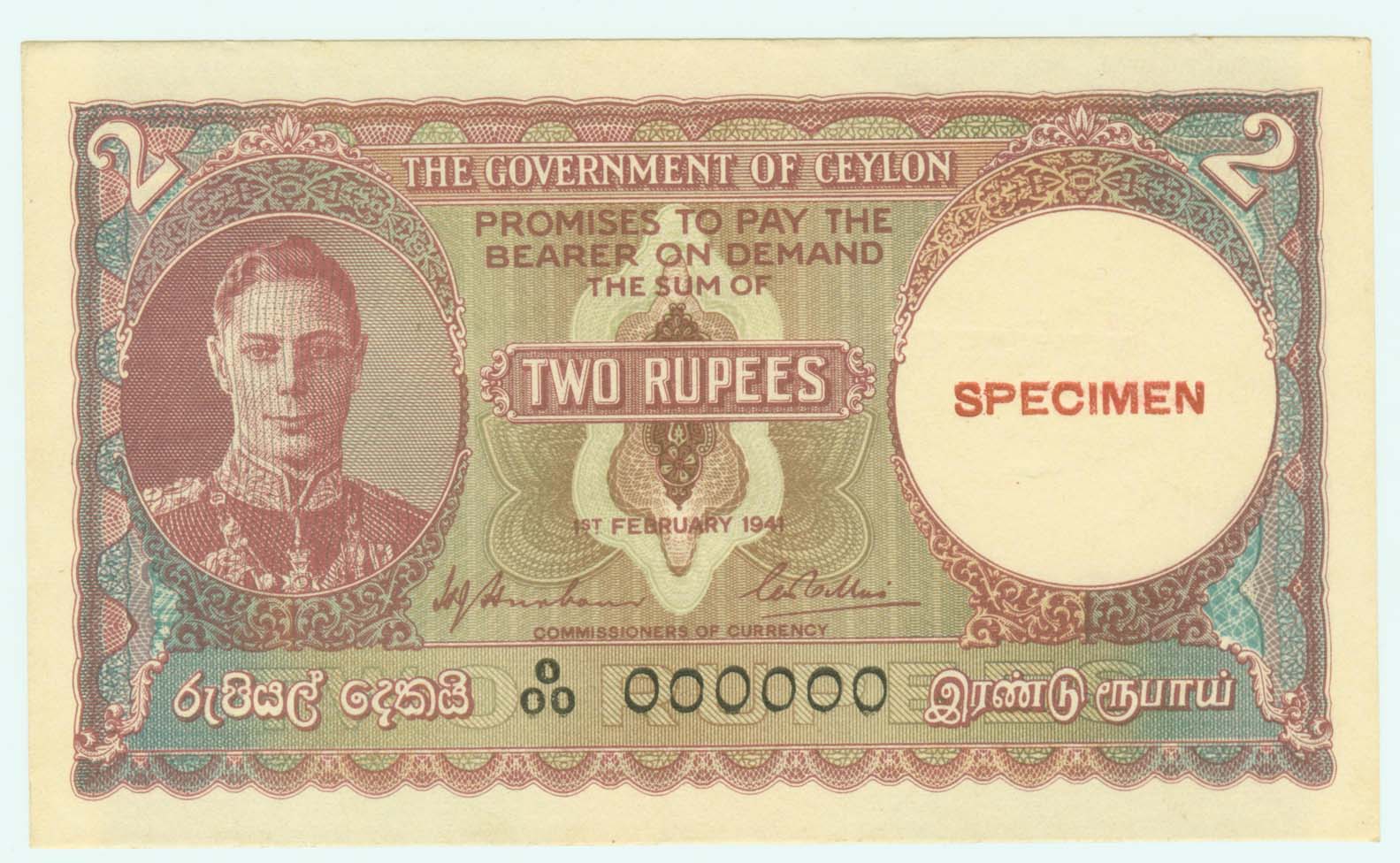
| 
| Mauve
127x76 mm - Rs 2
note
|
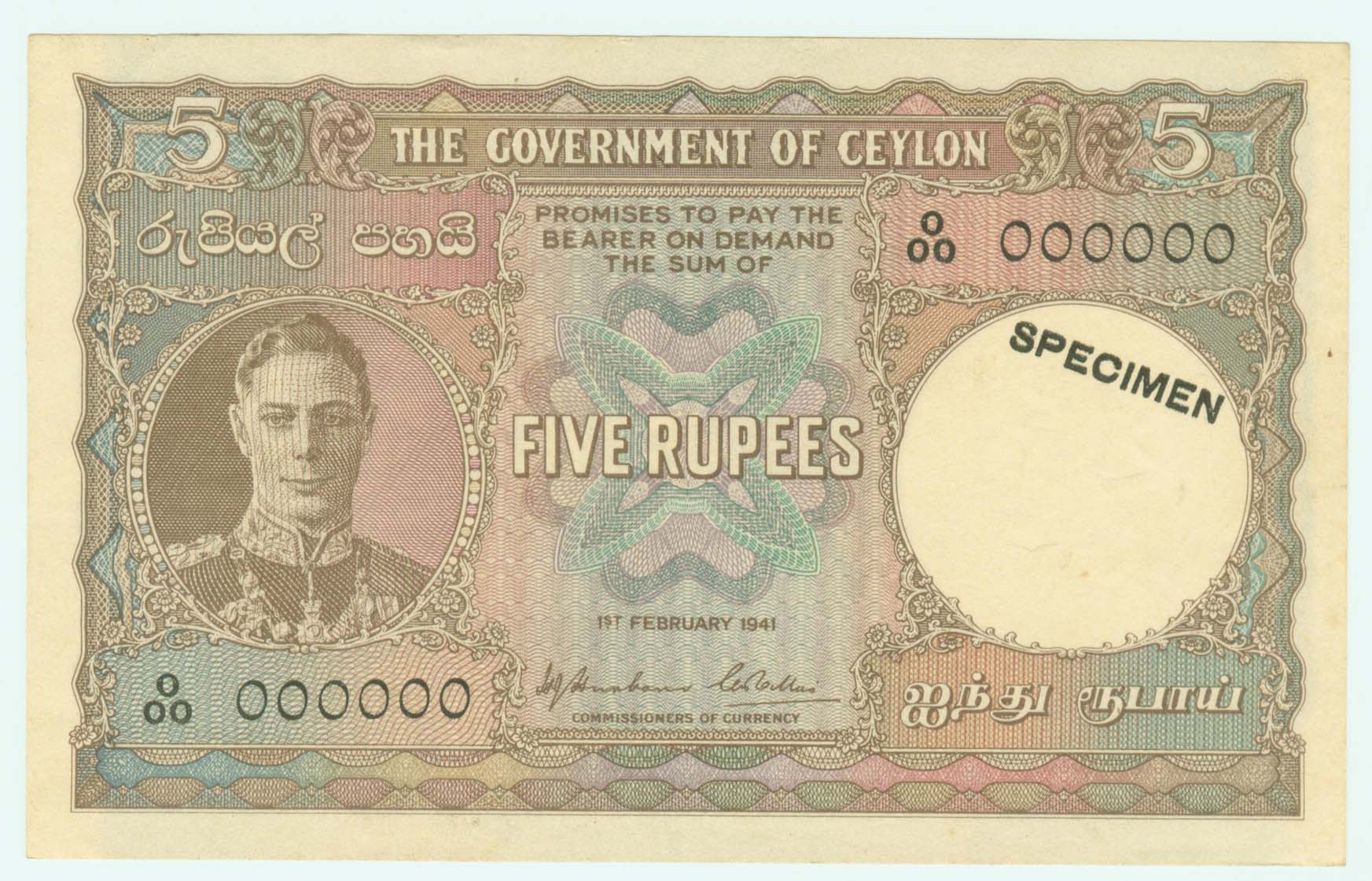
| 
| Brown
140x89 mm - Rs 5
note
|
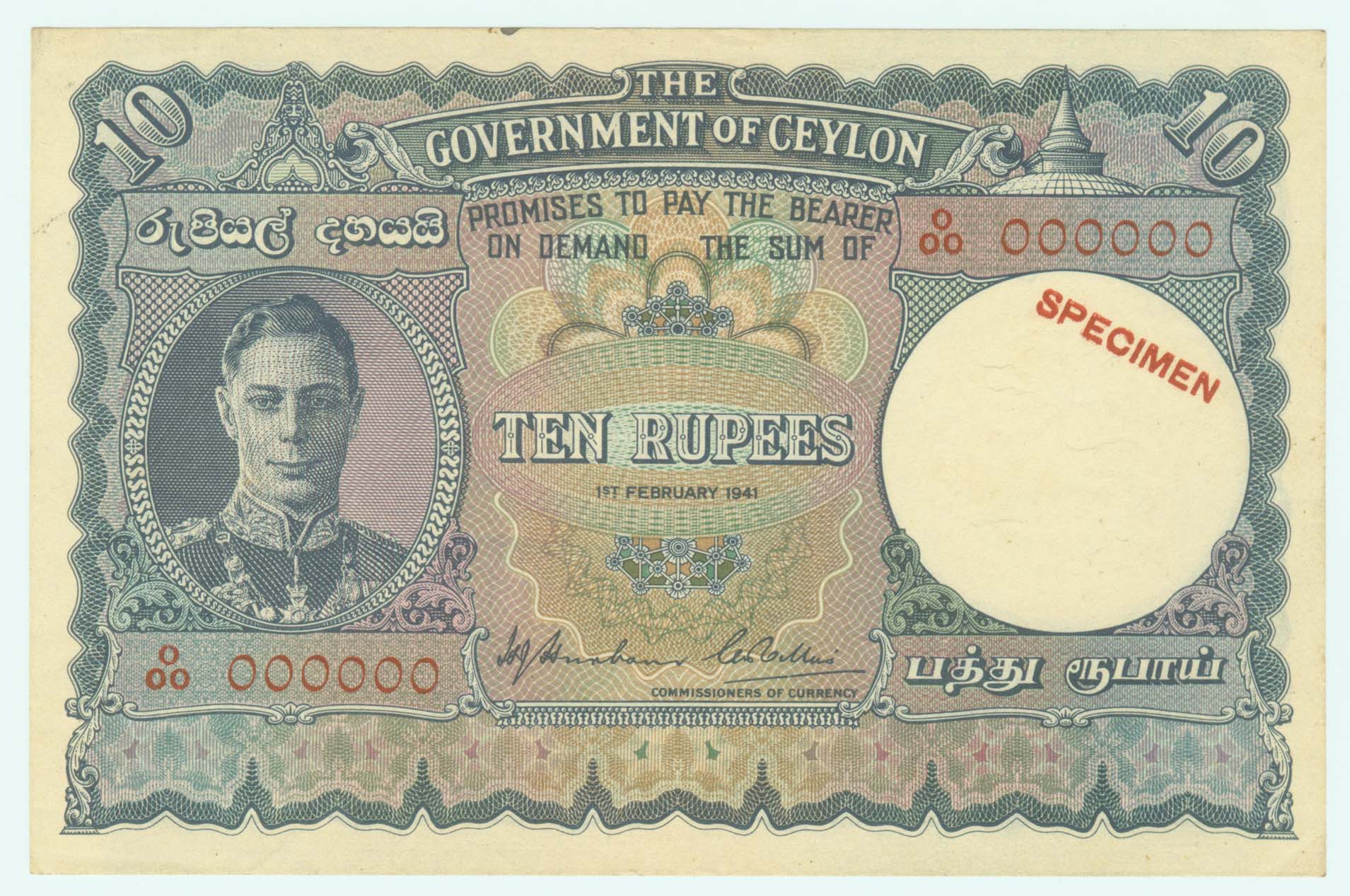
| 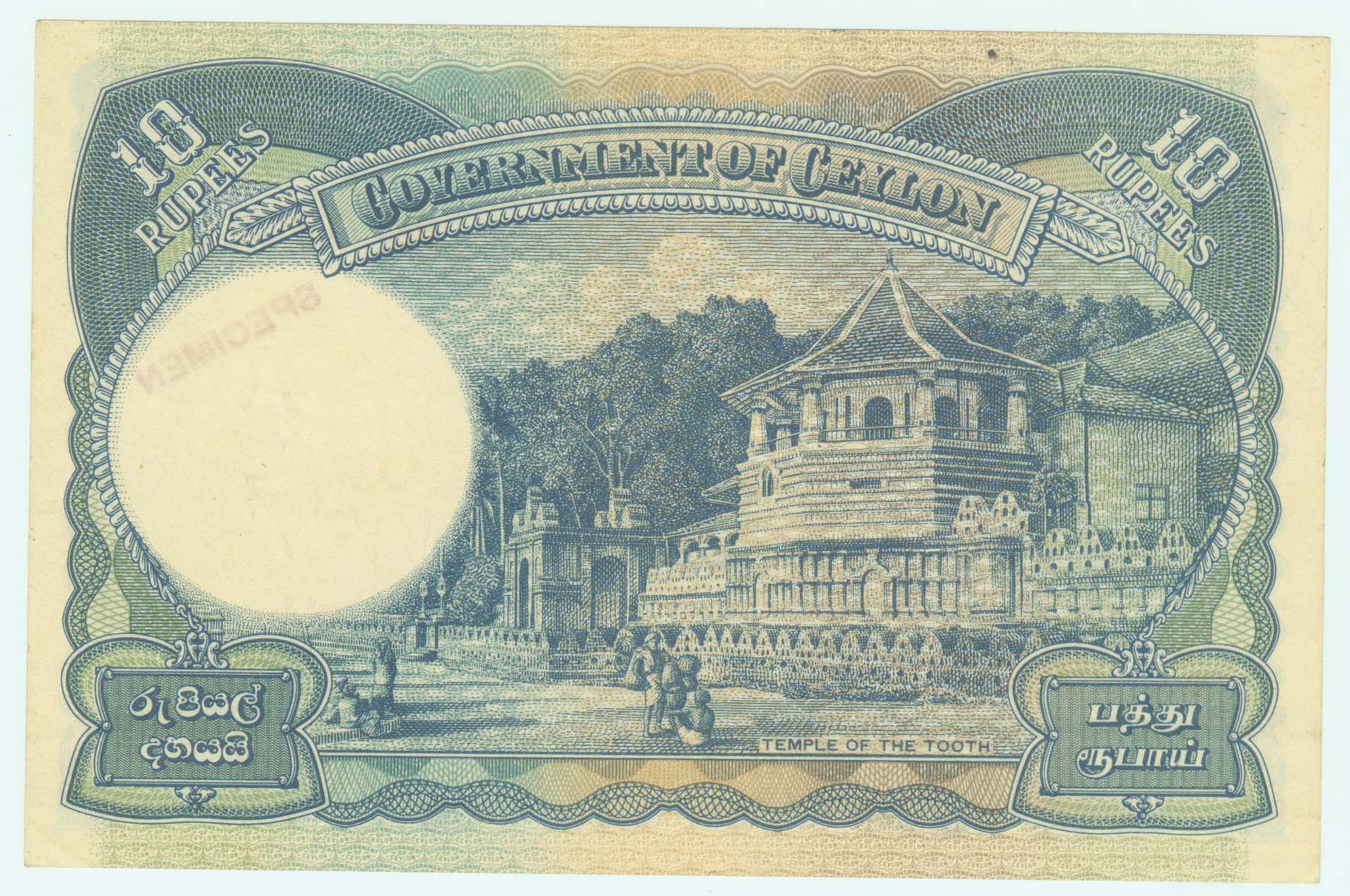
| Blue
152x102 mm - Rs 10
note
|
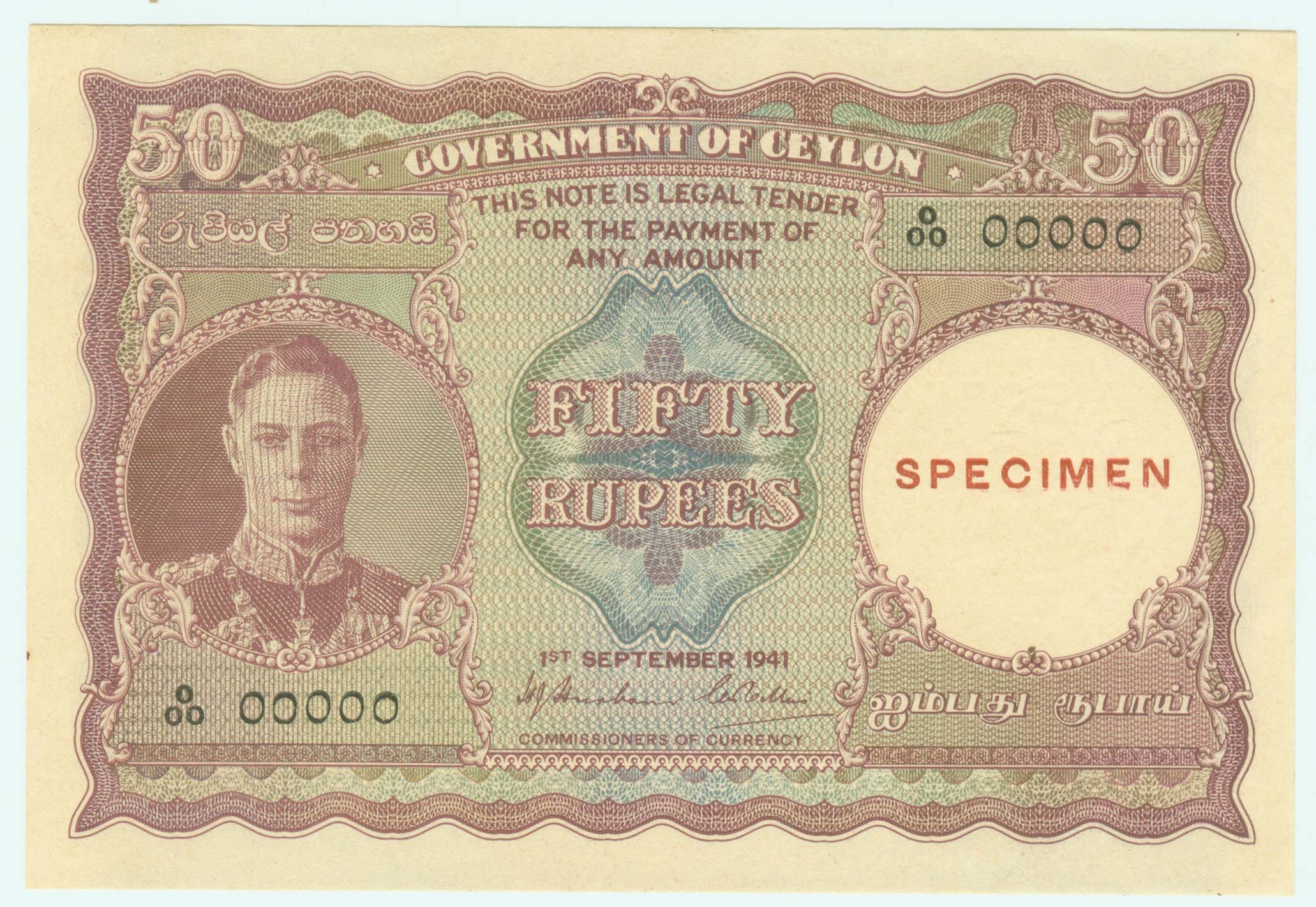
| 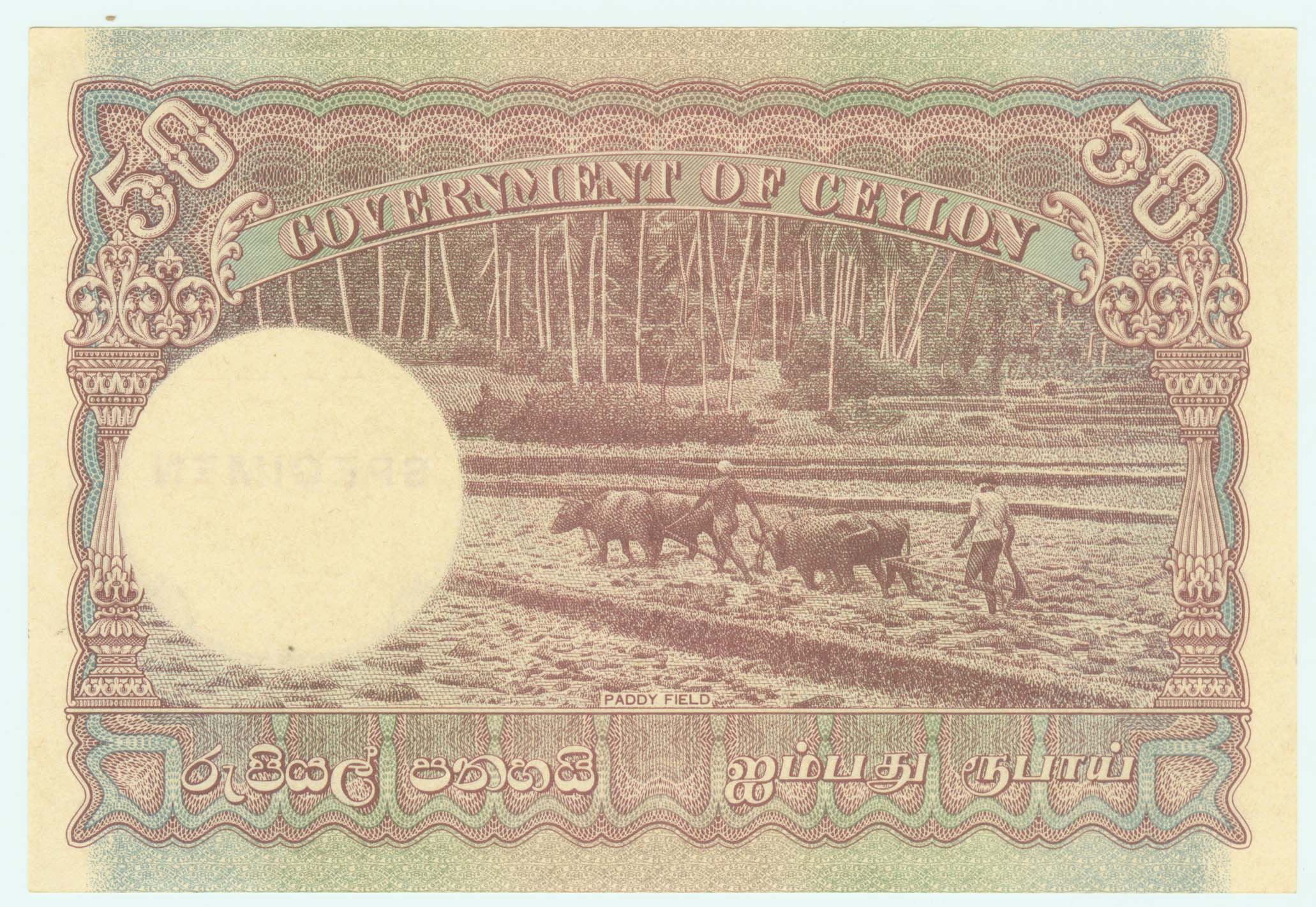
| Purple
165x114 mm - Rs 50
note
|
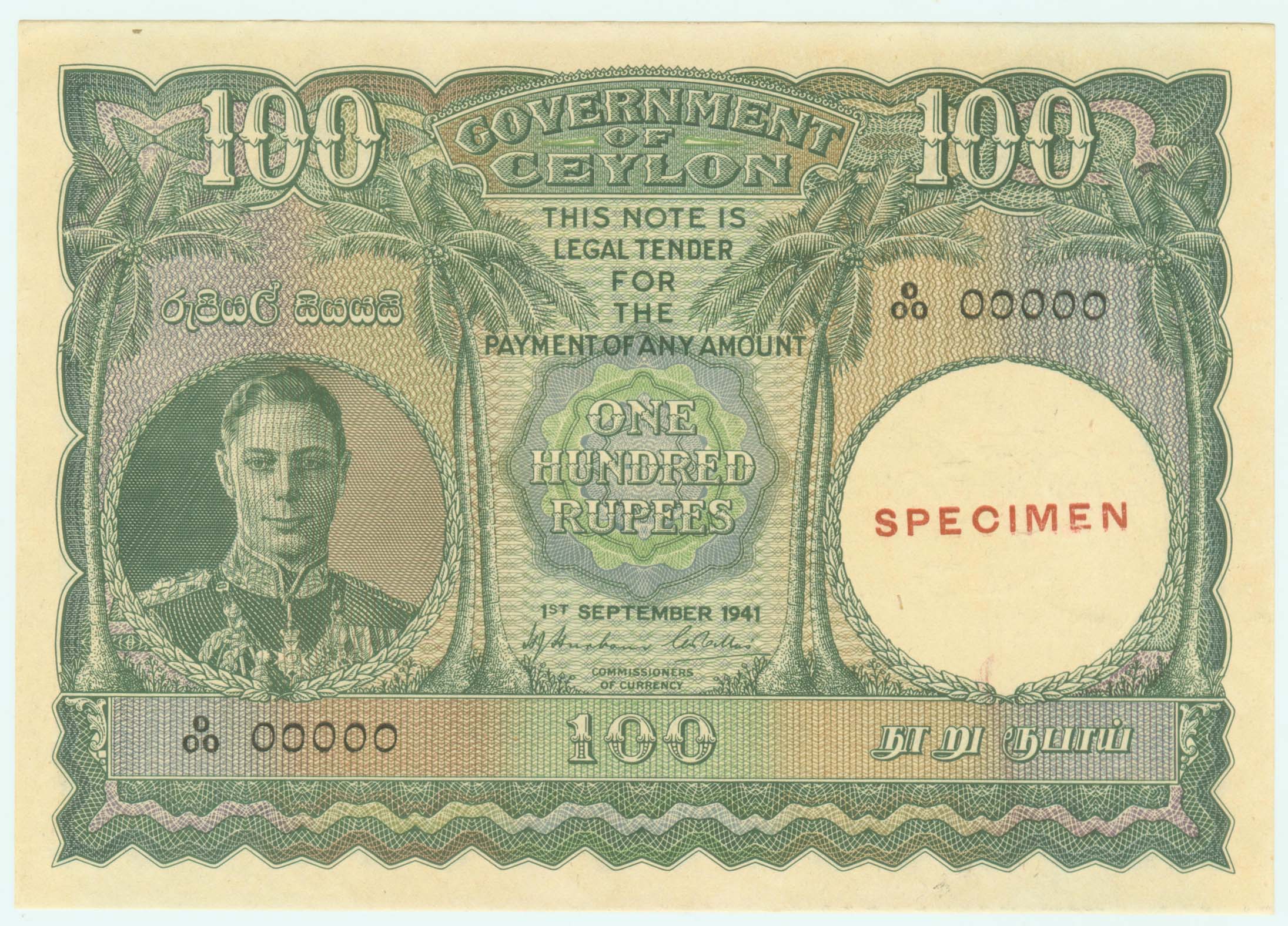
| 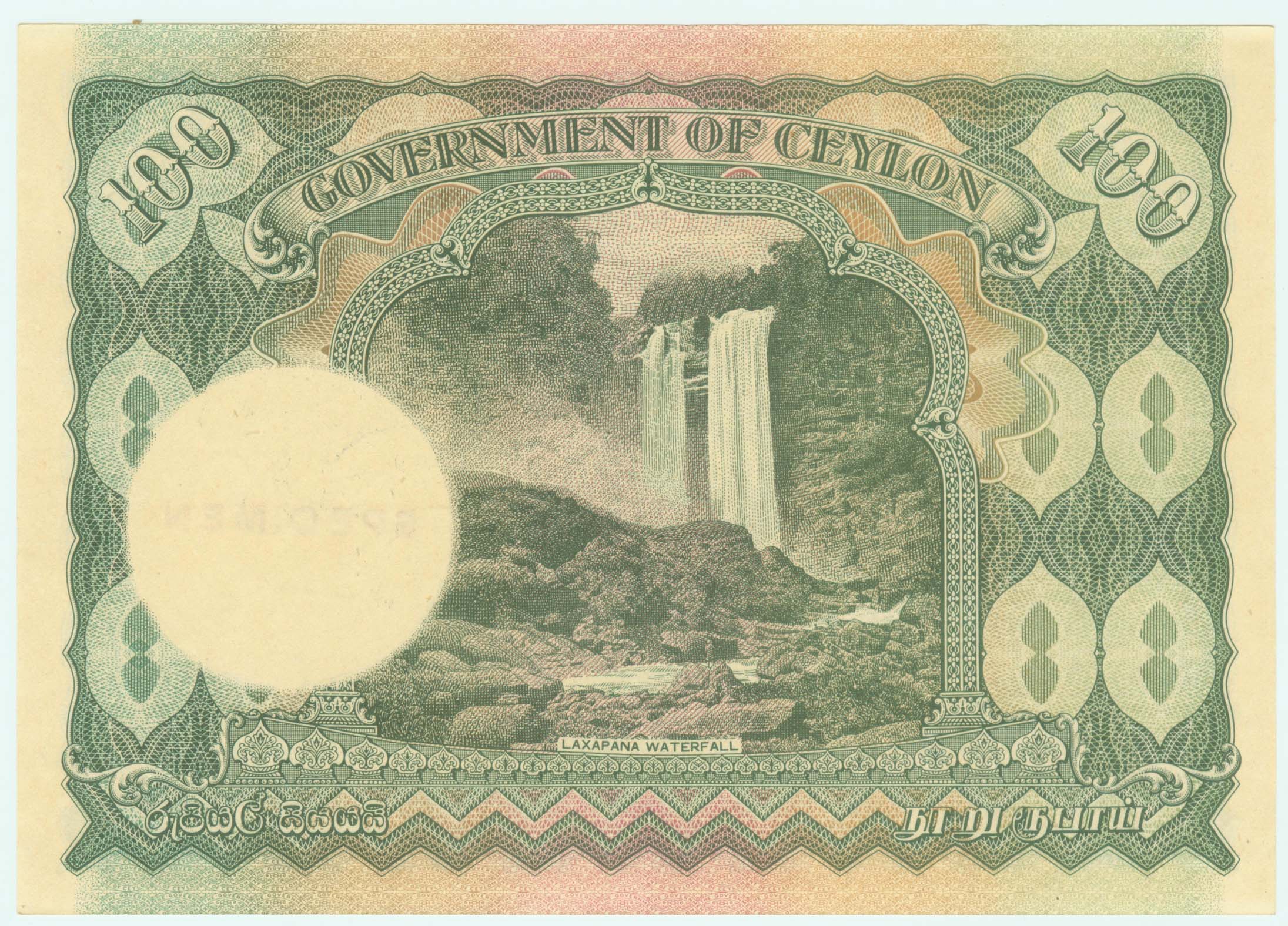
| Green
178x127 mm - Rs 100
note
|
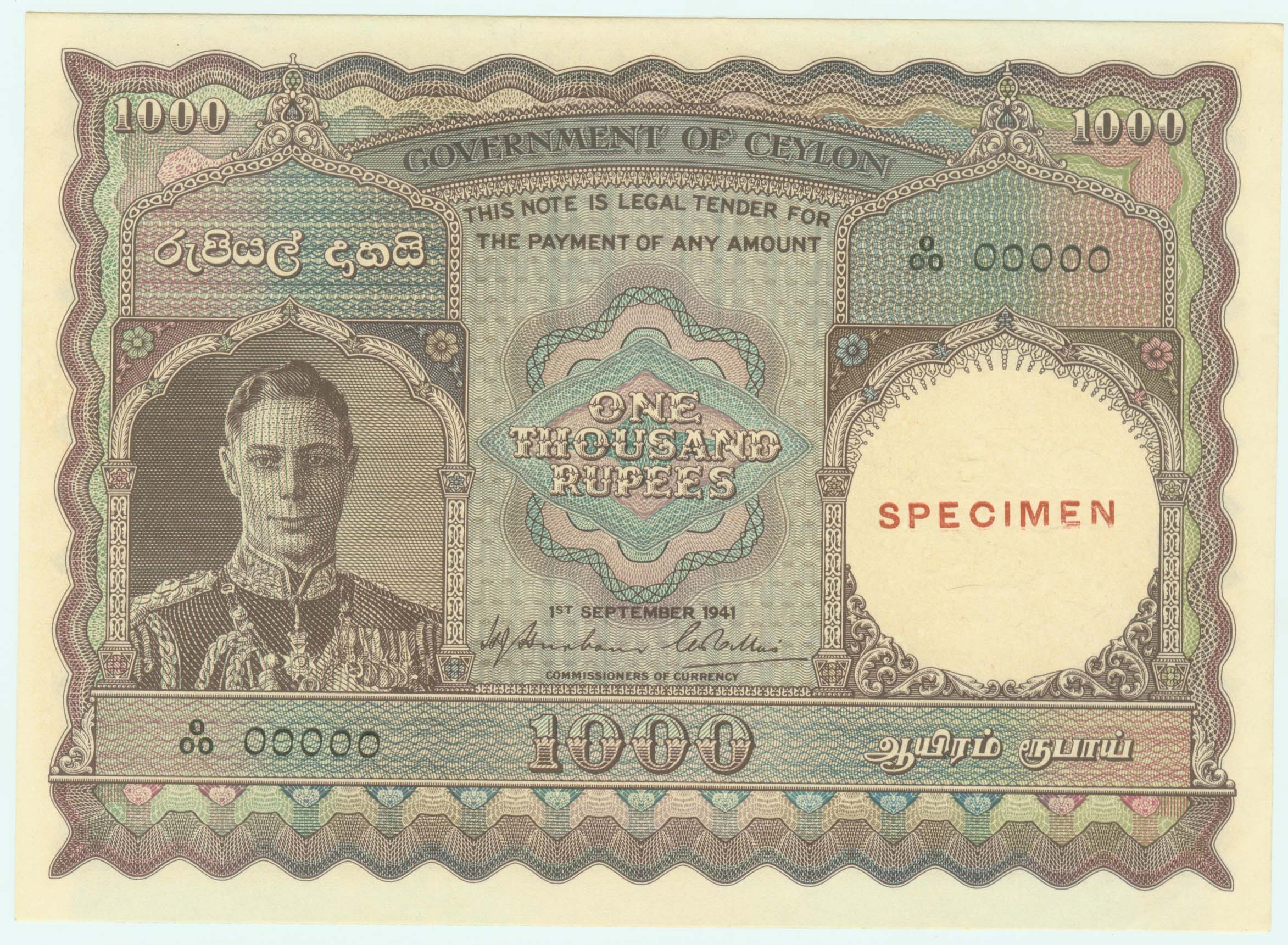
| 
| Purple
191x140 mm - Rs 1000
note
|
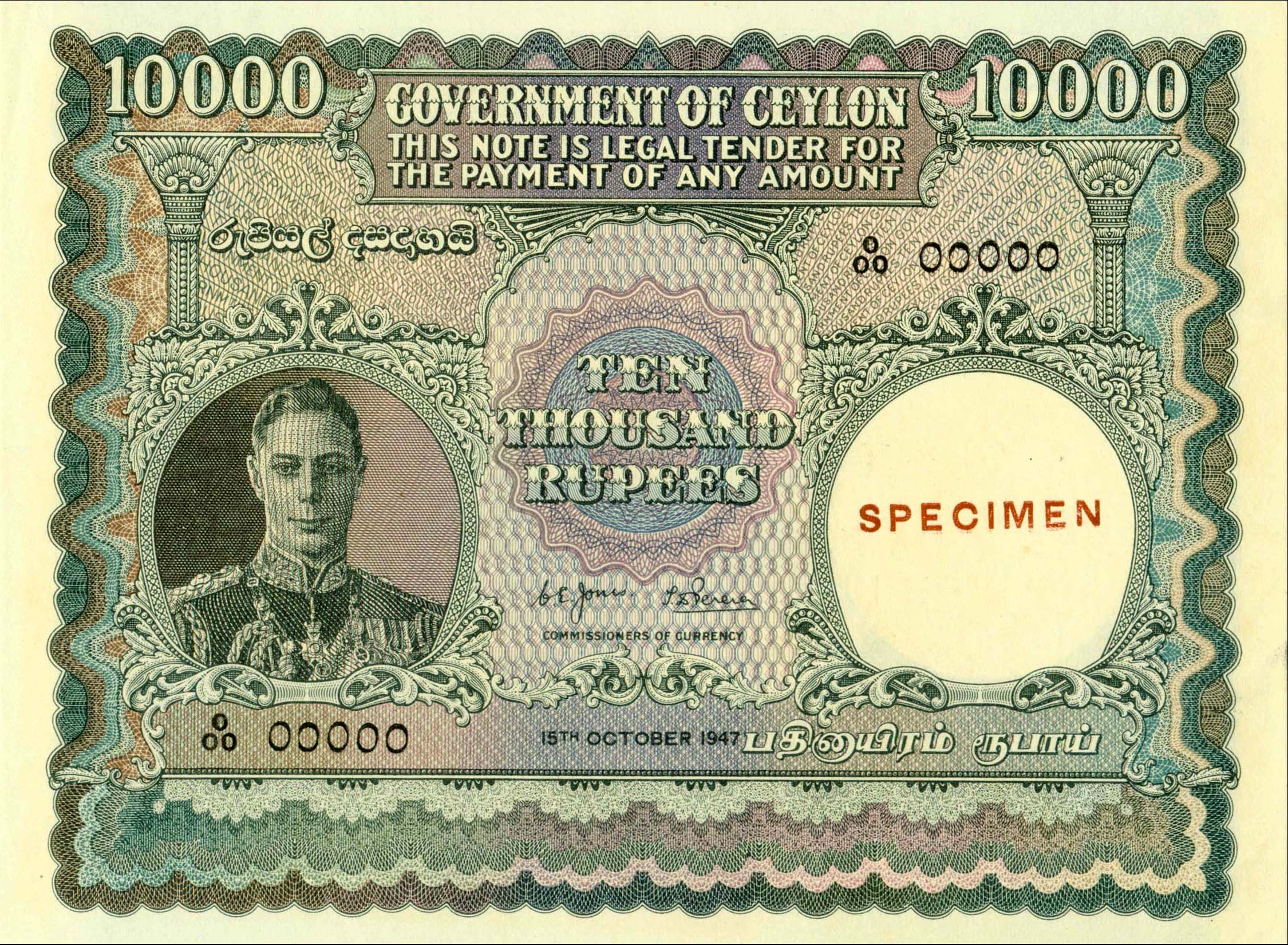
| 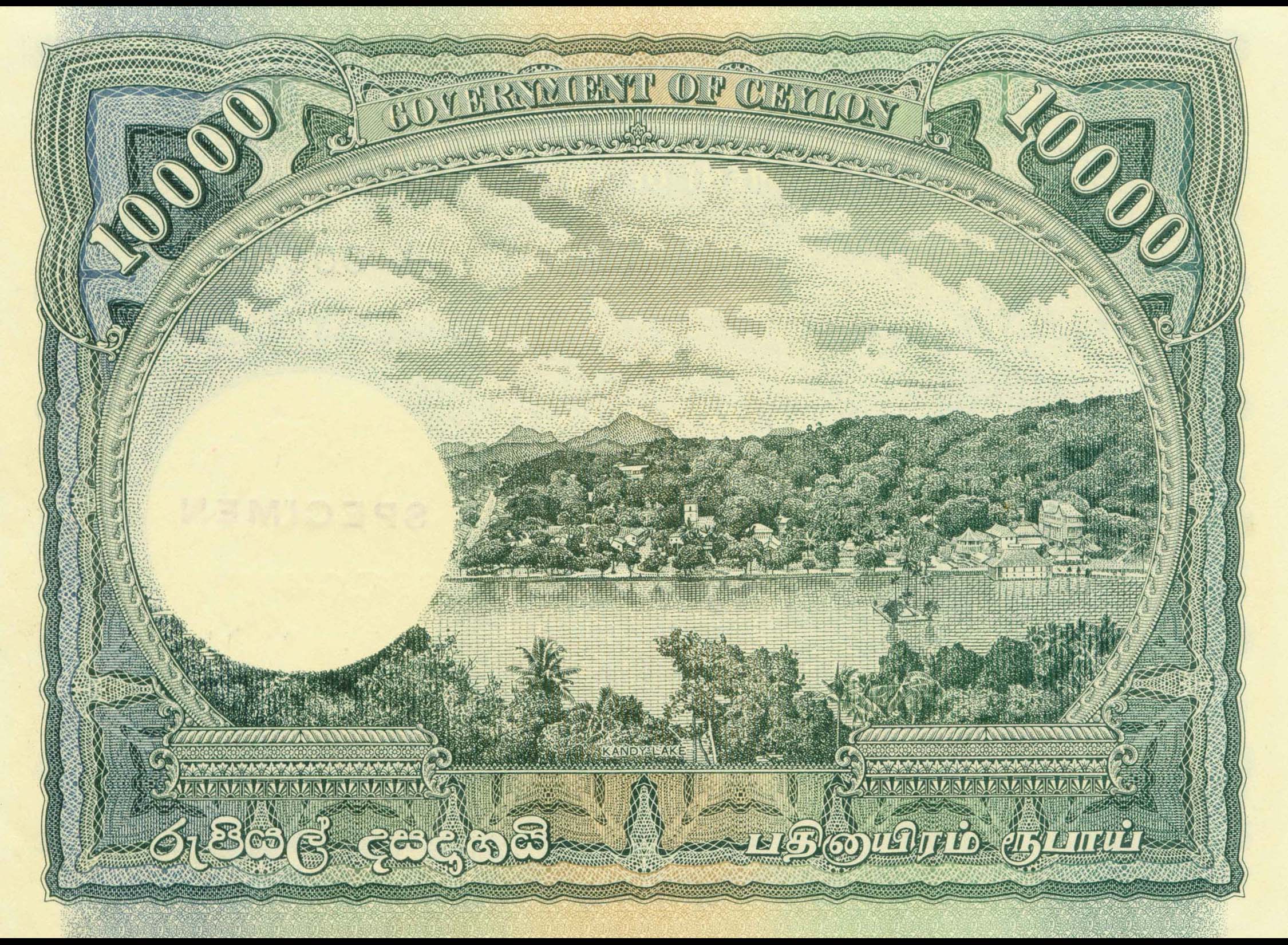
| Green
191x140 mm - Rs 10000
note
|
Red SPECIMEN stamped in the blank
round window left on front used for Water-Mark. In the middle for all
but the Rs5 and Rs10 where it is diagonal at +45° with SPECIMEN in
Black on the Rs5.
Prefix  with 000000
Serial once in Rs 1, 2 in upper-center and in all higher denominations,
twice lower-left and upper-right.
with 000000
Serial once in Rs 1, 2 in upper-center and in all higher denominations,
twice lower-left and upper-right.
 The Currency Note Press, Nashik ('CNP Nashik') was established
in 1928 as a Security Press to print high quality banknotes for the
Government of India.
Some Specimen Notes of this Series are seen with the CNP Specimen logo.
The Rs 1, 5, 10, 50 and 100 are illustrated in the 2021 CBSL 70th
Anniversary Book The 70 Year Journey of Currency Issue and Management
by Shellomi H. Gunawardena & W. M. K. Weerakoon Pages 44-46.
The Currency Note Press, Nashik ('CNP Nashik') was established
in 1928 as a Security Press to print high quality banknotes for the
Government of India.
Some Specimen Notes of this Series are seen with the CNP Specimen logo.
The Rs 1, 5, 10, 50 and 100 are illustrated in the 2021 CBSL 70th
Anniversary Book The 70 Year Journey of Currency Issue and Management
by Shellomi H. Gunawardena & W. M. K. Weerakoon Pages 44-46.
The lower denominations up to Rs100 comes rarely on Auction. Over the
last 25 years, I have never seen the Rs1,000 or Rs10,000 having been
on Auction. There are two sets among collectors in Sri lanka and CBSL
has displayed two sets in faded state attached with gum to a display
board 😢 at the CBSL Economic History Museum in Colombo Sri
Lanka.
The Unc Specimen notes were scanned at 300 dpi and displayed
at 25 dpi.
I thank Late Mr Tuan Sallay for them.
See other Specimen S-Notes
in notes.lakdiva.org.lk a website for
Banknotes of Ceylon and Sri Lanka since 1785.
















 The Currency Note Press, Nashik ('CNP Nashik') was established
in 1928 as a Security Press to print high quality banknotes for the
Government of India.
Some Specimen Notes of this Series are seen with the CNP Specimen logo.
The Rs 1, 5, 10, 50 and 100 are illustrated in the 2021 CBSL 70th
Anniversary Book The 70 Year Journey of Currency Issue and Management
by Shellomi H. Gunawardena & W. M. K. Weerakoon Pages 44-46.
The Currency Note Press, Nashik ('CNP Nashik') was established
in 1928 as a Security Press to print high quality banknotes for the
Government of India.
Some Specimen Notes of this Series are seen with the CNP Specimen logo.
The Rs 1, 5, 10, 50 and 100 are illustrated in the 2021 CBSL 70th
Anniversary Book The 70 Year Journey of Currency Issue and Management
by Shellomi H. Gunawardena & W. M. K. Weerakoon Pages 44-46.